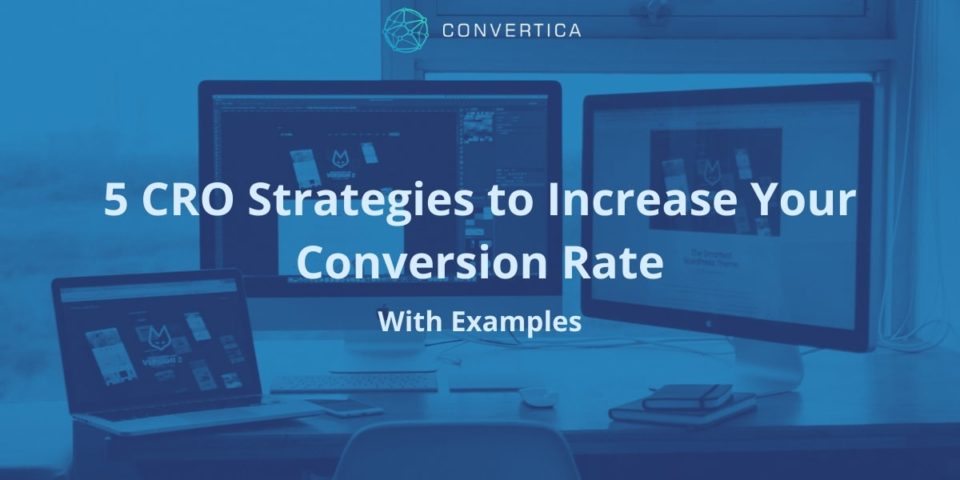
5 Conversion Rate Optimization Strategies for 2023 and Beyond (With Examples)
If you’re researching a conversion rate optimization strategy, you might have noticed that it can be quite easy to get overwhelmed. Doing CRO on your own can be intimidating, especially if you’re starting from scratch.
There are many strategies, best practices, and marketing steps you need to keep in mind. To put it shortly – if you want to quickly increase your conversions, you need to focus on the bottom of your sales funnel.
There, you’ll find a ton of potential customers who are on the verge of buying from you. But they just need the final push that tells them “it’s ok” and that they can trust you.
This is the low-hanging fruit of conversion rate optimization and the place where you can find quick wins.
But in today’s world, technology is constantly evolving and changing the way people interact with businesses, CRO should be seen as an essential part of your digital marketing strategy.
This article will look at some of the strategies that will be essential to success in CRO for 2023 and beyond.
What is a Conversion Rate?
Conversion rate is a measure that helps business owners understand the percentage of people who visit their website or online store and complete an intended goal such as buying a product, signing up for a newsletter or taking some other action.
Conversion rates are an important metric for measuring the success of digital marketing campaigns and website optimization efforts.
In order to increase conversion rate, business owners need to have a comprehensive understanding of their target audience and their behaviors.
To achieve this, they must use conversion rate optimization (CRO) strategies that create an effective user experience and guide visitors through the customer journey towards taking action.
CRO strategies for 2023 and beyond should focus on creating a seamless customer journey, providing personalized experiences, optimizing mobile experiences, leveraging AI technology, and delivering better content.
Ideal Conversion Rate
There is no single answer to this question as conversion rate can vary significantly depending on the industry and your customer base. Generally, a good conversion rate will be higher than 3%, although some industries may have much higher or lower conversion rate.
It’s important to keep track of your website’s performance over time by monitoring key metrics within the conversion funnel such as page views, average time spent on a page, and bounce rate to get an understanding of your conversion marketing strategy.
Measuring Your conversion rate optimization
Calculating your website’s conversion rate is fairly straightforward. All you need to do is take the number of site visitors who completed a desired action (such as buying a product or signing up for a newsletter) and divide it by the total number of site visitors to your website. The result is your conversion rate, which will typically be expressed as a percentage.
For example, if you had 100 visitors to your website and 10 of them completed the desired action, your conversion rate would be 10%.
This is also what we’ll be focusing on today. In this action-packed and practical article on conversion optimization strategies and examples:
5 ways to boost your conversion rate:
-
Using Scarcity to Improve Conversion Rates On Cold Traffic
-
Multi-step Forms to Decrease Bounce Rate and Boost Engagement
-
Developing Trust And Educating Your Leads Through Social Proof
-
Trust Badges And Other Authoritative Signals to Reduce Friction and Boost Conversions Rate
-
All-Inclusive CRO Audits That Cover Your Whole Site.
To improve this rate over time, you can use the strategies outlined above such as optimizing for mobile, personalizing content and leveraging social proof. Over time, these efforts will help you to increase the conversion rate of your website and maximize the ROI of your digital marketing campaigns.
Ultimately, having a high conversion rate is key to driving revenue for any business. By utilizing the strategies outlined above, you can optimize your website performance in 2023 and beyond and ensure that you are building a successful online presence.
Ready?
Let’s dive right in.
1. Using Scarcity to Improve your Conversion Rate On Cold Traffic

Source: AppSumo
Scarcity is a proven marketing tactic that also can drastically boost conversions rate.
You see it everywhere:
-
In eCommerce with countdown timers telling you there’s only one stock left on the page.
-
Marketing consulting experts telling you they only have time for 1 more client.
-
Auction sites alerting you to bid now before someone else does so.
It’s a proven conversion rate optimization strategy that can be best explained as “a product becomes more attractive when their perceived availability is limited.”
Using scarcity is like a quick nudge to potential customers who are on the fence about buying from you.
They have a limited attention span (as do most people browsing the internet) and they need a reason to care.
Show them a tempting offer with a time limit next to it and you’ll get their attention real quick.
There are a few different ways you can implement scarcity as part of your conversion rate optimization strategy.
A lot of it comes down to the right mix of words (copywriting) and/or web elements (widgets, plug-ins, custom code, etc.).
Let’s take a look at some examples of scarcity in Conversion rate optimization (CRO).
Words for time scarcity:
-
Deal ends today.
-
Only 12 hours left.
-
Price goes up in 1 day.
-
Offer expires today.
Words for stock scarcity:
-
First 50 people get a free coaching call.
-
Nearly sold out.
-
Limited edition.
-
Only available to members.
-
Get them while they last.
Words that imply exclusivity:
-
Members only.
-
Login required.
-
Class full.
-
Membership now closed.
-
Exclusive offers inside.
-
Get it before everybody else.
-
Rush my order (for Prime members only)
Some eCommerce stores go as far as using fake timers and countdowns to inspire urgency and get people to buy faster.
Now, the ethics of fake scarcity is a topic for a different time.
But that just goes to show how effective scarcity is when it comes to conversion rate optimization.
Need more live examples and different ways you can use scarcity to boost your conversion rate?
Check out our full list of biggest brands using scarcity marketing and how you can implement this strategy in your own site.
2. Multi-step Forms to Decrease Bounce Rate and Boost Engagement
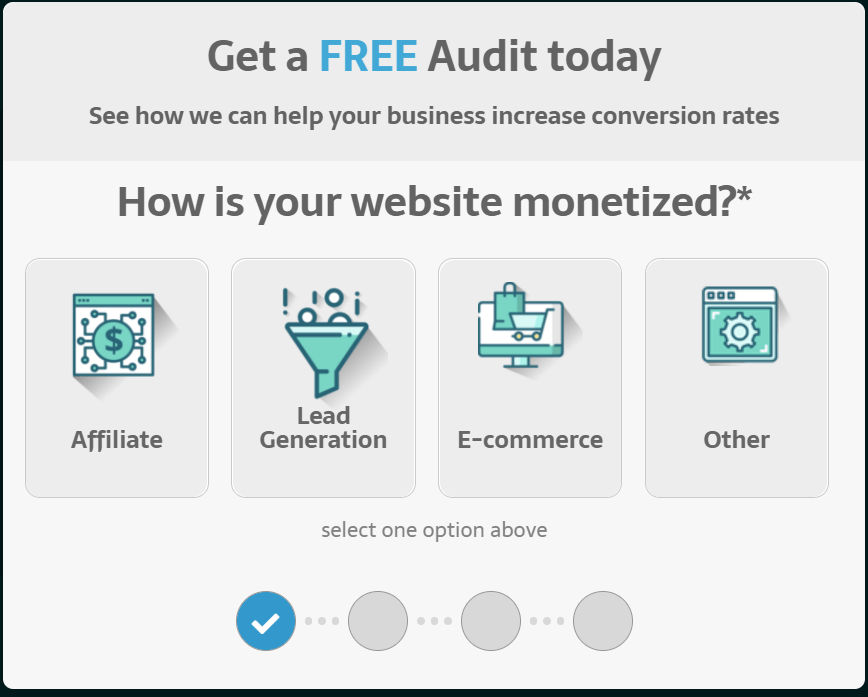
Source: Convertica
Want to increase the conversion rate on your Shopify website and start converting more qualified leads?
Consider using multi-step forms to make your site visitors stay longer on your website and keep them engaged.
With high-quality and well-designed web forms, your potential paying customers learn more about you, develop trust, and be more likely to continue to your final CTA.
There’s a lot that goes behind boosting your conversion rate. But to very generally break it down, you need to:
-
Keep your first-time website visitors.
Let them stay on your page and convince them it’s relevant to them through your design and copywriting.
-
Educate them.
Educate your visitors with your offer and target their pain points (copywriting, your offer, your positioning, etc.).
-
Qualify your leads.
Not everyone who lands on your landing page will be a relevant lead. Being able to qualify qualified leads will save you a lot of time in the long run (copywriting, your offer/pitch, and ideally, a multi-step form).
Multi-step forms are ideal for boosting your conversion rate and qualifying your leads.
How do these forms work?
The best way to learn is through an example.
Check out the form on the Convertica homepage to learn the steps it goes through. It’s interactive and designed to keep leads on the site longer.
The questions it asks include:
-
How is your website monetized?
-
How many monthly unique visitors do you have?
-
What’s the link to your website?
-
Where should we send your FREE audit? (contact information).
Here’s why this works so well for CRO:
-
Engaging design elements that lets the prospect know how many steps are left.
-
Branded design that fits with the rest of the site well.
-
Specific questions and asks for the right information (ends with opt-in info).
Thankfully, there are many form builder tools out there you can use to create a lead-generation specific web form.
And if you’re looking for general web page optimization best practices, be sure to check out our full guide to multi-step forms for more info and the step-by-steps.
3. Developing Trust And Educating Your Leads Through Social Proof
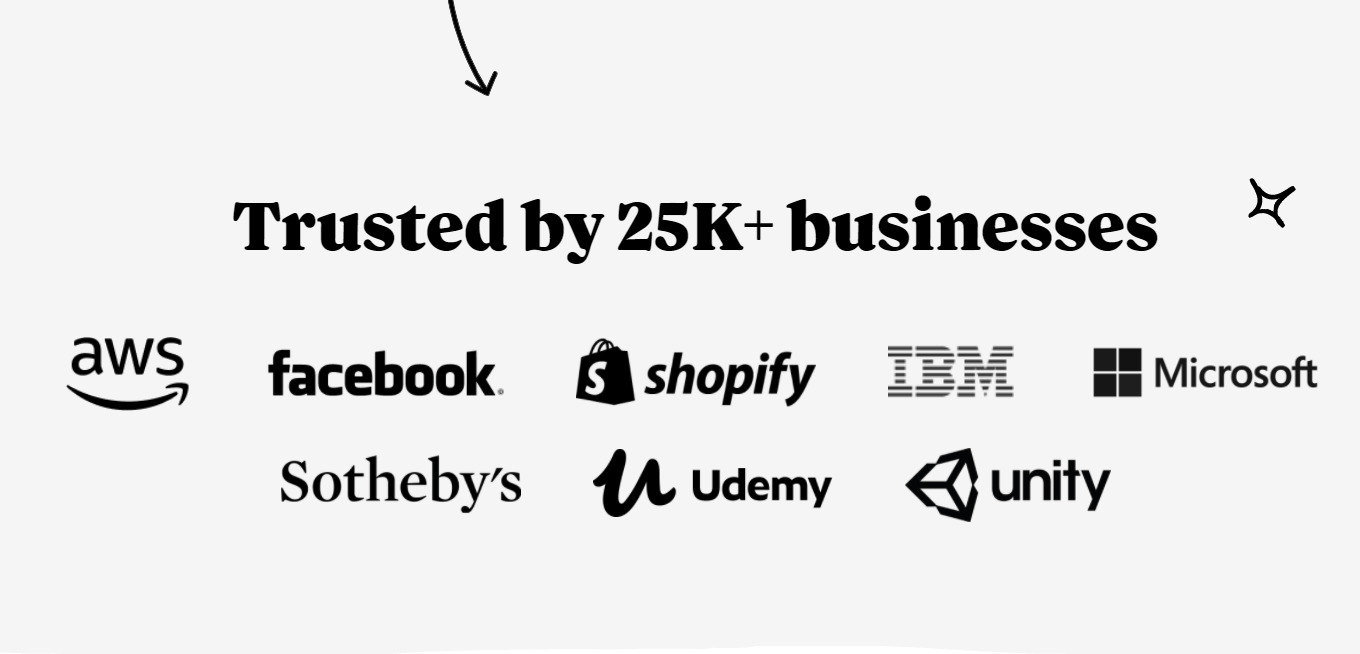
Source: Intercom
Trust is one of the most powerful tools in your conversion rate optimization arsenal.
Building trust is hard nowadays because your leads probably have a thousand other tabs open and don’t have a huge attention span to begin with.
You need to educate them quickly as to why you’re trustworthy to do business with and why your offer is relevant.
Some other ways you can leverage trust include:
-
Being present on review sites (Capterra, Trustpilot, G2, etc.).
-
Strong web presence and social media.
-
Strong branding and marketing on your website (e.g. strong “about us” page that shows you’re an actual person).
-
Social proof – quotes and testimonials from past clients or paying customers.
Zendesk is great at building trust and using social proof that’s digestible at a glance.
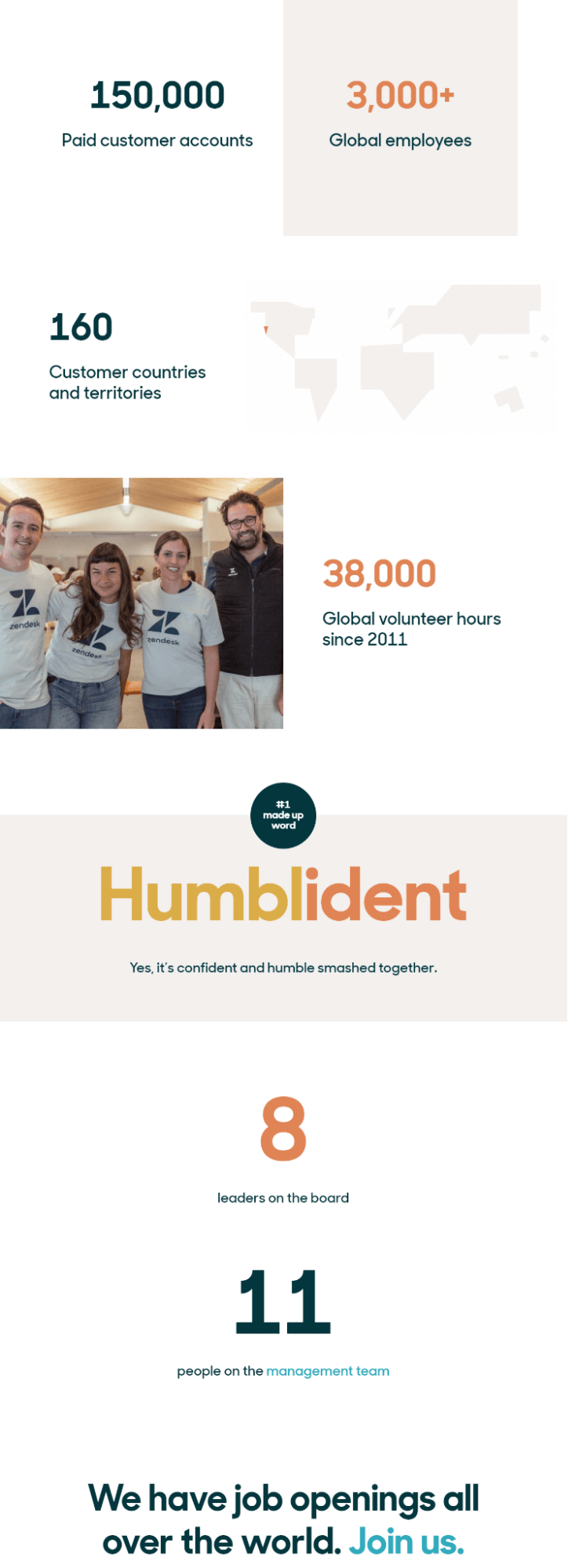
There’s a lot you can learn from their marketing too. Including how to leverage your lead generation strategy, content strategy, PR marketing, pricing, SEO, and more.
4. Trust Badges And Other Authoritative Signals to Reduce Friction and Boost Site’s Conversion Rate
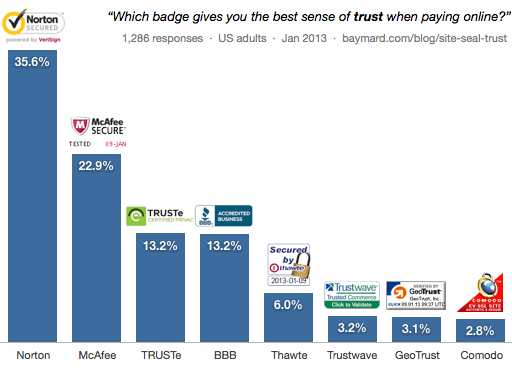
Source: Baymard
This ties in directly with the above.
Another great way to increase your trust is through trust badges, online certifications, social proof, and more.
For example, in an eCommerce conversion rate A/B test, Goinflow found that including the McAfee seal on an electronic website boosted the conversion rate. In a test of over 3 days, their revenue was measured as following:
-
No badge: $112,286
-
Norton Secured: $112,538
-
McAfee Secure: $126,769
The McAfee badge returned the highest life rate of 15.7% with a 97% confidence score.
The best part is that adding the McAfee badge to your website is a very quick and easy process, free for your first 500 visitors/month.
That’s an easy way to suddenly jump your conversion rate.
Looking for other easy conversion rate increasing strategies?
Look into your target audience and what they consider a business to be trust-worthy.
Or check out our full guide to trust badges for more info on this conversion strategy partners.
5. All-Inclusive CRO Audits That Cover Your Whole Site

Source: NeilPatel
Okay, this might sound obvious but…
If you’re looking for an all-inclusive website analysis of your average conversion rate and other website elements – a CRO audit is the best way to go about this.
Essentially, a CRO audit is research and data-based assessment of the state of your website.
It’s like looking at your website with a magnifying glass to identify each link and element of your website to find bottlenecks that stop people from converting.
What’s included in a CRO audit?
Depends on a lot of things. But our process usually includes:
-
Setting goals and hypotheses.
-
Identifying which pages to optimize.
-
Doing a thorough customer analysis (who, what, where, and when of your site visitors. Heatmaps, Google Analytics, etc.).
-
Website analysis: Evaluating your landing page layout, design, and copywriting.
-
Collecting data from analysis and A/B tests.
-
Applying changes, checklist, and implementing the conversion rate optimization plan accordingly.
Obviously, there is no one-size-fits-all approach to CRO audits. Everything depends on the specific website, goals, and data.
Once all the audit checks are applied, you should come out of the CRO audit converting more traffic into leads.
Think of it as a one-time investment.
Once you make the changes, your website will be in better condition and start getting more leads per existing traffic.
Across industries, the average landing page conversion rate is around 2.35% (source). After a strong CRO audit, you could be getting 5.31% or higher (which is the top 25% of landing pages – not too unrealistic).
Not bad, right?
Benefits of Conversion Rate Optimization (CRO)
Good conversion rates will vary depending on the industry and type of business, but typically a conversion rate of 2-3% is considered good. To calculate your website’s conversion rate, divide the total number of conversions by the total number of visitors.
The benefits of CRO are vast and can help businesses and sales team achieve their online goals faster. Not only will your website be more attractive to visitors, but it will also have better search engine optimization rankings and higher conversion rates. In addition, CRO can help you increase customer loyalty, target potential customers more effectively and ultimately maximize revenue.
By effectively utilizing CRO strategies, businesses can create a better customer experience and optimize their website performance. Ultimately, this will lead to increased conversion rates and higher ROI on digital marketing efforts.
Where to Maximize Your CRO Strategy?
Once you have identified the key conversion marketing tactics that are appropriate for your business, you can begin to identify which areas of your website should be targeted with these tactics.
Homepage
The homepage is often the first page a visitor will see and therefore it is important to optimize this page to increase conversions. Make sure that your content, visuals and calls-to-action are all tailored towards the target audience.
Landing Pages
Landing pages should be optimized for specific goals of each sales team such as downloading a whitepaper or signing up for a newsletter. Be sure to include relevant visuals, content and CTAs on the page in order to maximize and increase conversions.
Product Pages
Product pages should be optimized with images, videos, customer reviews, descriptions and more. These elements can help shoppers get the information they need in order to make an informed purchase decision.
Checkout Pages
The checkout page should be optimized with simple navigation and a one-click purchase option. Additionally, it’s important to include trust signals such as customer reviews and secure payment logos.
Pricing Page
The pricing page should be optimized to make sure that customers can easily find the information they need to make a purchase decision. Additionally, having different pricing options can help capture more sales and increase conversion rates.
Blog
Blog posts can be optimized to increase conversions by including relevant calls to action at the end of each post. Additionally, leveraging content upgrades can help capture all your incoming leads and drive more conversions.
Conversion Marketing: From Site Visitors to Paying Customers
Conversion marketing is all about understanding the needs of potential customers and leveraging tactics to turn them into paying customers. Implementing a CRO audit can help your business optimize its website, improve customer experience and boost conversions. So, don’t wait any longer – start optimizing today!
Remember, conversion rate optimization is an ongoing process and there’s always room for improvement. It’s important to monitor your website analytics regularly and make small changes as needed in order to maximize the potential of your website. With the right strategy in place, you can drive more revenue and grow your business.
The key is to stay up-to-date with the latest trends in CRO and be sure to keep testing different tactics. With patience, practice and a customer-focused approach, you will see an increase in conversions and ROI on your digital marketing efforts.
Final Thoughts
So, to recap, let’s go over some of the top conversion rate optimization questions:
-
What is CRO strategy?
A conversion rate optimization (CRO) strategy is the science and art of increasing the percentage of your website visitors who take desired action. Be it buying a product, signing up for your services, opting into your newsletter, or submitting a form. Conversion marketing aims to transform more of your website visitor traffic into real business results and get you more leads from the same traffic.
-
What are the best practices for optimizing your conversion path?
There are a lot of best practices and strategies you can follow to optimize your conversion path and website. To start with, you can use the proven strategies we’ve covered above:
-
Using scarcity to improve conversion rates on cold traffic.
-
Multi-step forms to decrease the bounce rate and boost engagement.
-
Developing trust and educating your leads through social proof.
-
Trust badges and other authoritative signals to reduce friction and boost conversion rate.
-
All-inclusive CRO audits that cover your whole site.
-
What is the conversion rate optimization formula?
To calculate your conversion rate, divide the number of conversions you’re getting in a specific time frame by the total number of people who visited your site or landing page. Then, multiply it by 100%. For example, if your site had 10,000 visitors and 1,000 conversions in the last 30 days, your conversion rate is 10%!
Now, are you ready to boost your conversion rate and start getting more leads per traffic?
Claim your free website audit today to see how we can help your business increase the conversion process. We’ve increased website conversions anywhere from 20-100%+ across different niches from affiliates, eCommerce, SaaS, local businesses, and more.
FAQs
How do I track my conversion rate?
To track your website’s conversion rate, you need to use analytics tools like Google Analytics or Hotjar. These tools will provide you with data about the number of visitors who have visited your site, as well as the number of conversions (or desired actions) taken by those visitors.
What is an example of conversion in marketing?
Conversion in marketing is when a website visitor takes a desired action such as signing up for an email list, downloading a guide/ebook, or buying a product.
What is the Purpose of Conversion Marketing Tactics?
The purpose of conversion marketing tactics is to increase the percentage of website visitors who take the desired action. This can be anything from buying a product or service, signing up for a newsletter, or submitting a form. By optimizing your website and leveraging effective CRO strategies, you can get more leads per traffic and maximize your conversions.








 To get started, please enter your details below
To get started, please enter your details below
0 Comments